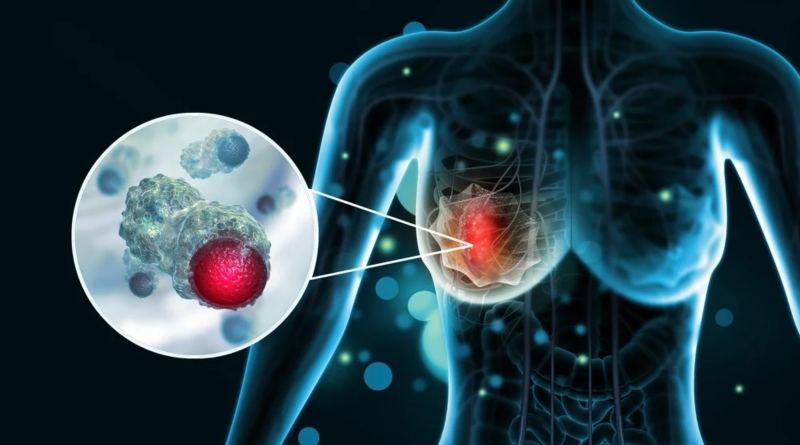“Head and neck cancer” is a medical term used to describe a number of different malignant tumors that develop in or around the throat, larynx, nose, sinuses, and mouth. An estimated 66,920 persons (49,190 males and 17,730 women) were diagnosed by 2023.
It is critical to recognize the symptoms of head and neck cancer. Early detection provides timely medical intervention, which improves treatment results. Recognizing these symptoms early allows for immediate medical action, improving prognoses. This blog focuses on crucial symptoms—sore throat, vocal changes, and atypical lumps—critical in recognizing this throat, mouth, and nose cancer. Understanding these indicators quickly leads to appropriate steps, vital for improved health outcomes in the fight against head and neck cancer.
What Is Head And Neck Cancer?
Head and neck cancer refers to cancers that develop in various areas of the head and neck. These cancers originate from the cells lining these regions. Common types include oral, throat, and laryngeal cancers.
Factors like smoking, alcohol use, and HPV infection may increase the risk. Treatment involves surgery, radiation, chemotherapy, or a combination, depending on the cancer type and stage.
Dr. Sumant Gupta, a seasoned oncologist, specializes in treating head and neck cancer. With over 15 years of experience, he has successfully helped several patients facing this cancer. Dr. Gupta employs advanced therapies like targeted treatment and precise radiation to improve outcomes. Known for his patient-centered care, he’s a trusted figure in the fight against head and neck cancer.
How Common Are Head And Neck Cancers?
Head and neck cancers are among the most common cancers globally, affecting hundreds of thousands of people each year. They represent about 4-5% of all cancer cases worldwide.
What Are The Common Warning Signs Of Head And Neck Cancer?
Head and neck cancer can be complex to diagnose because symptoms are often mild and can mimic less severe conditions like a cold or sore throat. A sore throat that doesn’t get better is the most common symptom of head and neck cancer.
Other warning signs include:
a) Changes in Voice
Noticeable alterations in one’s voice, such as persistent hoarseness, roughness, or voice fatigue, may not always result from a common cold or overuse of the vocal cords. These changes could signal problems in the voice box (larynx) or surrounding structures. Seeking medical advice becomes imperative to explore potential issues related to the voice box or larynx, possibly indicating the presence of cancerous growths.
b) Unexplained Lumps or Swellings
Discovering unusual lumps, bumps, or swellings in areas like the neck, mouth, or throat can be alarming. While not all growths are cancerous, it’s vital to get them checked by a doctor promptly. These lumps suggest abnormal tissue growth or tumors that require medical attention and thorough evaluation to determine their nature.
c) Difficulty Swallowing
Experiencing pain or a persistent sensation of something stuck in the throat while swallowing could signify problems in the throat or esophagus. These difficulties might not solely result from common digestive issues or allergies but could be linked to throat or esophageal cancer. Seeking medical assessment is crucial to identify and address the underlying cause.
d) Changes in Mouth or Tongue
Red or white patches, persistent sores, or abnormal mouth, tongue, or lips lesions that do not heal within a reasonable time frame need medical attention. These changes may indicate oral cancer or other concerning conditions that necessitate evaluation by a healthcare professional.
e) Persistent Ear Pain
Chronic ear pain without apparent ear issues, such as infections or injuries, could be a potential symptom associated with certain types of head and neck cancers. Consulting a doctor is essential to investigate further and rule out serious concerns.
g) Unexplained Weight Loss
Losing weight unintentionally without changes in diet or physical activity, especially a significant amount of weight, might raise red flags. Unexplained weight loss can sometimes signal various cancers, including head and neck cancer. It’s crucial to consult a healthcare professional for a comprehensive evaluation to determine the cause.
h) Chronic Nasal or Sinus Problems
Long-lasting nasal congestion, chronic sinus issues, or persistent discomfort in the nasal passages that resist conventional treatments might require evaluation for potential head and neck cancers affecting these areas. Seeking medical advice can help identify underlying causes and determine appropriate treatments.
“Recognizing warning signs like persistent sore throat, voice changes, or unusual lumps in the neck, mouth, or throat is crucial,” states Dr. Sumant Gupta. “Regular dental check-ups, avoiding tobacco and excessive alcohol, maintaining good oral hygiene, and seeking medical advice for persistent symptoms are key preventive measures,” he emphasizes. “Early detection through awareness of these signs and seeking timely medical attention significantly improves the chances of successful treatment and recovery from head and neck cancer.”
How Much Does Head And Neck Cancer Treatment Cost in India?
The cost of head and neck cancer treatment in India can vary significantly based on factors such as the cancer stage, types of treatment required (surgery, radiation therapy, chemotherapy, targeted therapy, immunotherapy), hospital facilities, doctor’s fees, and geographic location.
However, to provide a general idea, the cost of treatment for head and neck cancer in India can range from approximately ₹5,00,000 to ₹20,00,000 for the entire treatment course. In USD, this equates to around $6,700 to $26,700.
A happy patient of Dr. Sumant shared, “I underwent treatment for head and neck cancer under Dr. Sumant Gupta. His expertise and personalized approach were exceptional. The team guided me through the process, addressing my concerns and providing top-notch care. Thanks to their efforts and advanced treatments, I’m on the path to recovery.”
Another satisfied patient of Dr. Sumant said, “Dr. Sumant Gupta and his team offered remarkable care during my head and neck cancer treatment. Their dedication and support made a significant difference in my journey. From diagnosis to post-treatment, their expertise and compassion were evident. I’m grateful for their guidance, which was crucial to my recovery.”
Conclusion
Timely recognition of head and neck cancer warning signs is pivotal for prompt medical intervention, ultimately influencing treatment outcomes. Key symptoms include persistent sore throat, voice changes, and unusual lumps, crucial in identifying these cancers affecting vital areas. Understanding these warning signs guides toward timely action, facilitating better health outcomes in combating head and neck cancer.
-
Can poor oral hygiene lead to head and neck cancer?
Poor oral hygiene is a risk factor but not a direct cause; it can contribute to oral cancer development.
-
Are head and neck cancers hereditary?
While some genetic factors might increase susceptibility, most cases aren’t solely hereditary.
-
Can an HPV vaccine prevent head and neck cancer?
While it primarily prevents cervical cancer, the HPV vaccine may reduce some head and neck cancers linked to HPV infections.
-
Are all throat lumps indicative of cancer?
Not all throat lumps signify cancer; they can also stem from infections or benign conditions.
-
Does radiation therapy for head and neck cancer cause hair loss?
Hair loss typically occurs in the treated areas; however, it might not be as extensive as other cancer treatments.
Read More : What Is The Success Rate For Bone Marrow Transplants?




